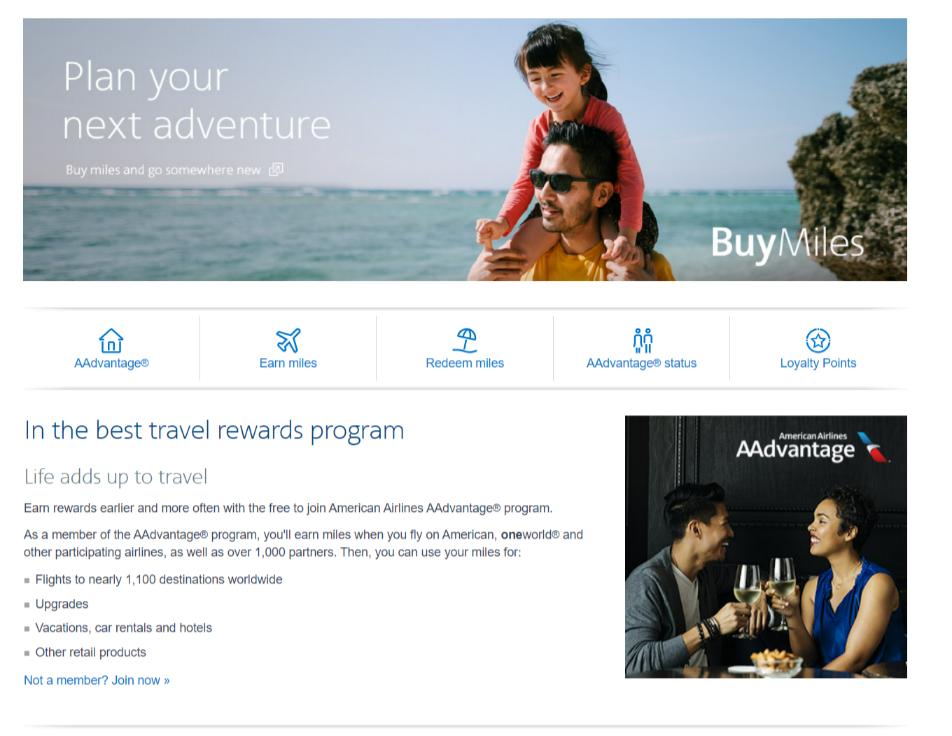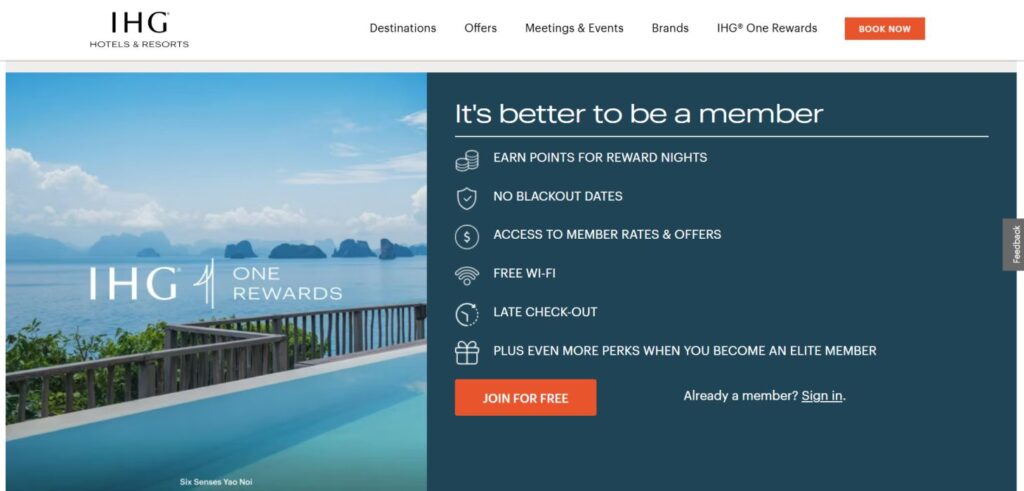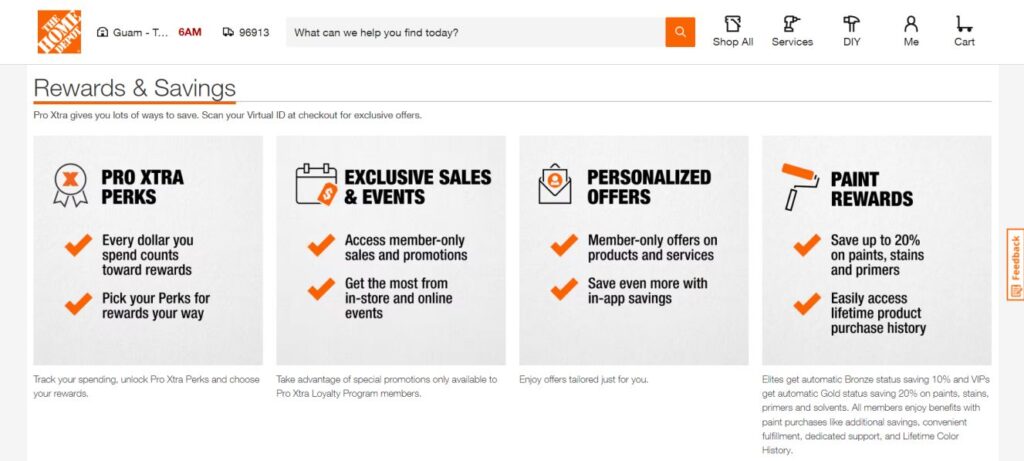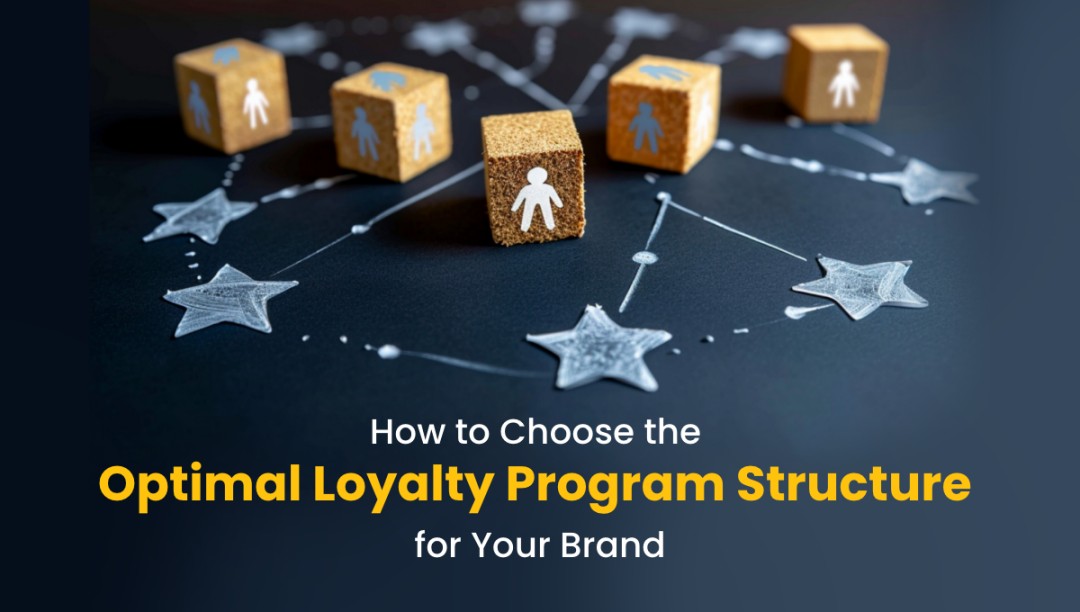Loyalty programs are highly pervasive across most industries and have become part of our daily lives. Consumer expectations of receiving value and accessing convenience have evolved, and brands must meet those expectations. Therefore, a brand with a loyalty program must be able to demonstrate that its program design is meaningful and optimized to what its customers truly want.
This blog article will provide brands with some guidance on selecting the right type of loyalty program structure and design that best fits their business model and customer needs.
Five Key Questions Before Choosing a Loyalty Program Structure
When thinking about designing a loyalty program structure for your brand, ask yourself the following initial questions to help narrow down the possibilities.
1. What Are Our Key Objectives?
Generally, brands will want one or more of the following: either an increased share of wallet, conversion, retention, activity, average order value, customer lifetime value, or reduction of churn, collection of zero-party and first-party data, enhanced personalization, and differentiation. Clearly identifying these objectives and keeping them top of mind when thinking about the most optimal program framework is important to ensure there’s a clear link between what the program will deliver vs what the brand wanted in the first place.
For instance, if one of the objectives is differentiation and a points loyalty program is launched into a market that is in no way different from a brand’s key competitors, that objective is unlikely to be met. This will result in the brand not getting true value out of its loyalty program.
2. What Are Our Main Customer Pain Points?
Your customer service or on-the-ground operational teams will be able to provide a long list of what these are. And others will be able to be collected via data analysis. Some may or may not be the same as your key objectives. Understanding what these are will go a long way to figuring out how a loyalty program can play a role in helping to overcome those pain points.
3. What Is Our Standard Frequency of Purchase?
This is a really critical question to answer because it will dictate just how much value the program members will be able to access. If you’re a retailer that sells mattresses (a highly infrequent purchase), then a program predicated on repeat transactional activity (e.g., points) may not be optimal. There are a few exceptions to this rule, but one of those maybe if you’re willing to provide the member with a relatively high amount of payback so they can access a decent amount of value based only on one purchase.
Conversely, if you’re a quick service restaurant where a significant chunk of your customers are frequent transactors (or at least there’s a possibility to move them into being more frequent), a points mechanic may well be more optimal. The accumulation – and subsequent usage of that value via redemption options will help in driving more engagement.
4. How Much Margin Are We Prepared to Give Back?
Every brand will have a view of how much value they will be able to return to a member of a loyalty program based on their financials. Like the frequency of purchase, this is another critical question that brands must understand to inform their decision-making and usually goes hand in hand.
If you’re a supermarket, your margins are low. Assuming a points program, most supermarkets can afford about 0.5 percent to perhaps 1-2 percent maximum, which includes an allowable to run double points promotions. However, given the frequency of purchase is generally quite high (at least once a week), there is still an opportunity for members to secure significant value back over a 12-month period.
Conversely, if you’re a fashion retailer, you might be able to give back 10%. That value may be in the form of points, or it could be given back via a credit to be used on your next transaction (which many retailers tend to do), or it could contribute to status based on spend, where a member might access some benefits. That leads us to the next consideration.
Related Article: Financial Planning to Create a Successful Loyalty Program
5. What Experience Do We Want Our Members to Have?
A positive experience will have a long-lasting impact, which will likely result in repeat transactions, the member developing a more emotional connection to your brand, and positive word-of-mouth referrals. This is where a deep understanding of the customer and the experience they want needs to be factored in.
If you’re a D2C brand, you may have identified that your customers want fast and free delivery. Therefore, your program design needs to make that feature front and center. Alternatively, if you’re a brand that runs “how-to” classes that are highly valued by your customers, then making those classes available to your members first would make sense, as might rewarding them for referring those classes to others.

For help in answering these key questions and designing an effective loyalty program, consider consulting with a leading loyalty expert like Zinrelo. They can provide valuable insights and strategies to ensure your program meets your brand’s goals and delights your customers. With professional guidance, your loyalty program can achieve greater success and customer satisfaction.
Loyalty Program Design Frameworks and Examples

There are quite a few different types of loyalty program designs. Some of the most common ones are outlined below.
1. Stamp / Punch Cards
By far, this is the most common loyalty program design in the world. A member collects stamps/punches for purchases. After earning enough to complete the card, a reward is unlocked, which is usually a free product (e.g., a coffee).
a. Basic
This is where the member earns a stamp/punch for each transaction and accesses a reward once the required number has been attained. This is mostly effective when the price of the product being purchased is relatively consistent, such as a cup of coffee or a car wash.
Example: Costa Coffees’ Costa Club, where a bean is awarded for every coffee purchase.
b. Complex
This is where members are rewarded for purchases that have a wider variability in cost. When the member has earned the required number of stamps for their transactions, the total amount spent is calculated, and a percentage of the total is provided as the reward.
- Example: Hotels.com Rewards.
c. Multi
A variation of Basic, this is where a program incorporates multiple punch cards within a single program framework. Progress towards unlocking rewards from each individual punch card can be tracked simultaneously.
- Example: Greggs on Tap.
2. Loyalty Currencies
Loyalty currency designs are also highly prevalent and quite flexible, which allows them to be used across many different company types and industries to reward members. To earn the currency, members are required to identify at each transaction, which enables data capture opportunities and the ability to personalize the loyalty program experience down the track. Loyalty currency programs are more complex than stamp/punch but are still sufficiently simple to be present across many industries.
a. Single Loyalty Currency
A single brand providing the ability for members to earn points by transacting with them. The points are usually redeemable on the company’s products or services.
- Example: JCPenney Rewards (noting that their program design also features other elements as outlined in this article).
b. Coalition Loyalty Currency
A coalition loyalty program allows members to earn points across multiple partners, such as airlines, banks, supermarkets, utilities, retailers, and hotels. Points earned can also be boosted by taking out co-branded credit cards. These programs are primarily controlled by a single company, which is responsible for the distribution of points as well as the management of member accounts, marketing, and program rules.
- Example: American Airlines’ AAdvantage.

3. Status Tiers
The tiering approach is loosely aligned with the Pareto Principle, whereby a small number of customers can account for a sizeable amount of a company’s revenue (the so-called 80/20 rule). This rule can apply in many industries and provides the conditions by which a status tier program can be usefully applied. Many programs also tend to segment members based on spend via overt or covert tiers.
a. Stand-Alone
This design generally has status tiers with a set of benefits provided to members at each tier level. To move up tiers, a member must attain a certain threshold of spending over a set time period and then continue spending at that level to maintain their status. If they don’t, they risk being dropped down a tier and risk losing the benefits associated with the higher status.
- Example: Swarovski Club.
b. Within a Broader Program
A common application of status tiers is within a broader loyalty currency program, such as an airline, hotel, or retail. Members are segmented by their value to the business and provided with incremental benefits to recognize their loyalty as they move up the tiers. Members will usually be able to track their progress towards a reward (with points or miles) and track a parallel pathway to a status tier (with a different loyalty currency, such as status credits). The most common structure is four tiers (e.g., Bronze, Silver, Gold, and Platinum).
- Example: IHG One Rewards.

4. Member Benefits
A member benefits program provides members with access to a range of benefits simply by joining the program. These may be provided by the company but can also be sourced from third-party partners. Members can access benefits by identifying in-store at the point of sale, and providing their details to customer service when calling in or logging in online.
Many brands may not have sufficient margin or may not have customers spending enough at an individual level, to support a loyalty currency program or status tier program that delivers adequate value. If the value isn’t there, it will be difficult to deliver consistent member engagement. This is why it’s important to, at minimum, always ask the “Five key questions” outlined above.
a. Company
Under this design, members are provided with access to desirable benefits which are products or services of the brand. Generally, the brand will look for cost-effective benefits, but ones that have a high perceived value. An example of this model is the IKEA Family.
A very popular variation can be for the member to purchase a monthly or annual subscription, which then allows instant access to its accompanying benefits, which may or may not include discounts.
- Example: Pret A Manger’s Club Pret.
b. Supplier
This design works when brands are able to access product samples or rewards from their suppliers, which they can incorporate into their loyalty program. Accessing free samples is a great way for members to try new products without having to commit to a purchase. Under this model, members receive access to a selection of regular samples, which can result in a delightful experience.
- Example: Mecca’s Beauty Loop (noting that their program design also features other elements as outlined in this article).
c. Third-Party
Under this design, a brand may develop relationships with a range of third-party partners to provide member benefits. This design can be significantly more expensive to run because of the costs that a third party might charge, especially if the desired benefits are best in the market. Despite the costs, it remains relatively popular.
- Example: Verizon Up Loyalty Program.
5. Discounts
Discounting is used extensively in loyalty and member engagement programs by providing members with offers that are not accessible to non-members.
a. Basic
One of the simplest program designs, is where members who join are entitled to a set discount off every purchase for all transactions. This type of design is used by many retailers because it’s simple to understand and engage with.
- Example: Bed Bath N’ Table Rewards.
b. Delayed
This is a more sophisticated version of a basic discount program. In a discount program, a member transacting above a certain amount earns a discount to use on a future purchase. For example, ‘spend $100 and save 10% on your next visit’. This design is simple to understand and engage with and has the added advantage of locking the customer into a future purchase to access the discount.
- Example: My Cub Rewards.
c. Tiered
With a tiered discount, the level of discount provided increases based on the cumulative value of spend. Here, a member may start by receiving a 2 percent discount, which increases to 4 percent when they spend a cumulative $2,000 over a one-year period. Further it increases to 6 percent for a $5,000 cumulative spend. It can be argued this is a simple version of a status tier program, with status resetting at the end of the period.
- Example: Home Depot’s Pro Xtra Paint Rewards.

6. Credits
Closely related to the discount program design is the credit program, where members earn a credit amount for future spend on the company’s products. This may be in the form of a voucher or be held in their member account. The program is typically structured such that the margin required to cover the cost of the credit is built into the price of the product.
a. Delayed
This is an identical model to the delayed discount program. However, instead of being provided with a discount, the member is given an account credit which they can apply to their next purchase.
- Example: Modern Market.
7. Other Mechanics
Brands may also consider other program mechanics to supplement one or more of the above-mentioned designs. These can be referrals (although stand-alone referral programs also exist), cashback, gamification, and/or surprise & delight. It is noted that many of these elements can work together – it all depends on how the program is structured and what the ultimate member experience is.
For instance, irrespective of program design, it’s always recommended to overlay an element of gamification into it to make the experience more stimulating for members. Gamification can be as simple as providing a progress tracker to show members where they are in relation to the next tier. It could be a bunch of different challenges that members have the option of undertaking, in order to win something over a particular time period. This can also be supplemented with leaderboards that show rankings on how all the participants are tracking.
Brands should also take opportunities to leverage surprise & delight into their program design frameworks. Delighting members doesn’t take much, especially if it’s unexpected. Weaving this in will take some thinking, but could be well worth it, especially if it assists in fostering a deeper emotional connection with your best customers – which are generally those that account for the lion’s share of your revenue per the Pareto Principle.
Watch Outs and Tips to Get Your Loyalty Program Structure Right

As stated at the beginning of this article, loyalty programs are highly pervasive across many industries. As such, they are now used as less of a competitive advantage and more of what I would call a competitive must-have. Programs across many industries can be highly homogenized, such as pet care, credit cards, hotels, and the like.
Keeping in mind that many of your competitors may already have a loyalty program, having your program be well-designed, innovative, differentiated (within reason), and flexible enough to evolve quickly becomes quite important.
Partnerships
This is a great way to boost program value for your members, which is something that is increasingly seen in the market. It certainly doesn’t have to be a large coalition program. A brand may consider supplementing its loyalty program with key partners that are complementary to its brand. That may well prove to be a point of difference, and depending on the industry, it could also be a defensible advantage.
- Example: Cornerstone’s Our Medical Rewards program, where partnerships were established with cafes close to the brand’s medical centers. The aim was to provide discounts on coffees and teas to patients who were naturally unwell and likely to be waiting for a doctor anywhere between 30 minutes to an hour.
This type of experience may well make the difference between continuing to use this medical center vs going to a competitor.
Lifecycle Management Strategy
Irrespective of your program design, having a well-structured and robust lifecycle management strategy is very important. This is the way that brands will engage with members after the program has launched. A well-defined and agreed-upon lifecycle strategy will help minimize the running of promotions that can adversely impact the bottom line. Additionally, it will ensure that a more scientific approach is applied to help reward your best customers, reactivate laggards, and facilitate the handling of churn in the most optimal way.
Final Thought
This article outlines different program designs and provides examples of each. It also discusses the key questions a brand should ask when gearing up to launch a loyalty program, as well as some watch-outs and tips.
The bottom line is, that not all program designs are created equal and have different mechanics and purposes. It is important to ensure that no matter how well crafted a design is, it still needs to deliver both a) what a brand’s customers want and b) to the brand’s objectives. Only then will it be truly impactful.
Key Takeaways and Action Items
- Define Objectives: Align the loyalty program with key goals like retention, AOV, or data collection.
- Know Your Customers: Address customer pain points and align the program with their purchasing behaviors.
- Evaluate Financials: Ensure rewards are sustainable and valuable without harming profit margins.
- Enhance Experience: Create memorable experiences that build emotional connections with your brand.
- Lifecycle Strategy: Engage members with a strategy to reward, reactivate, and retain them effectively.


